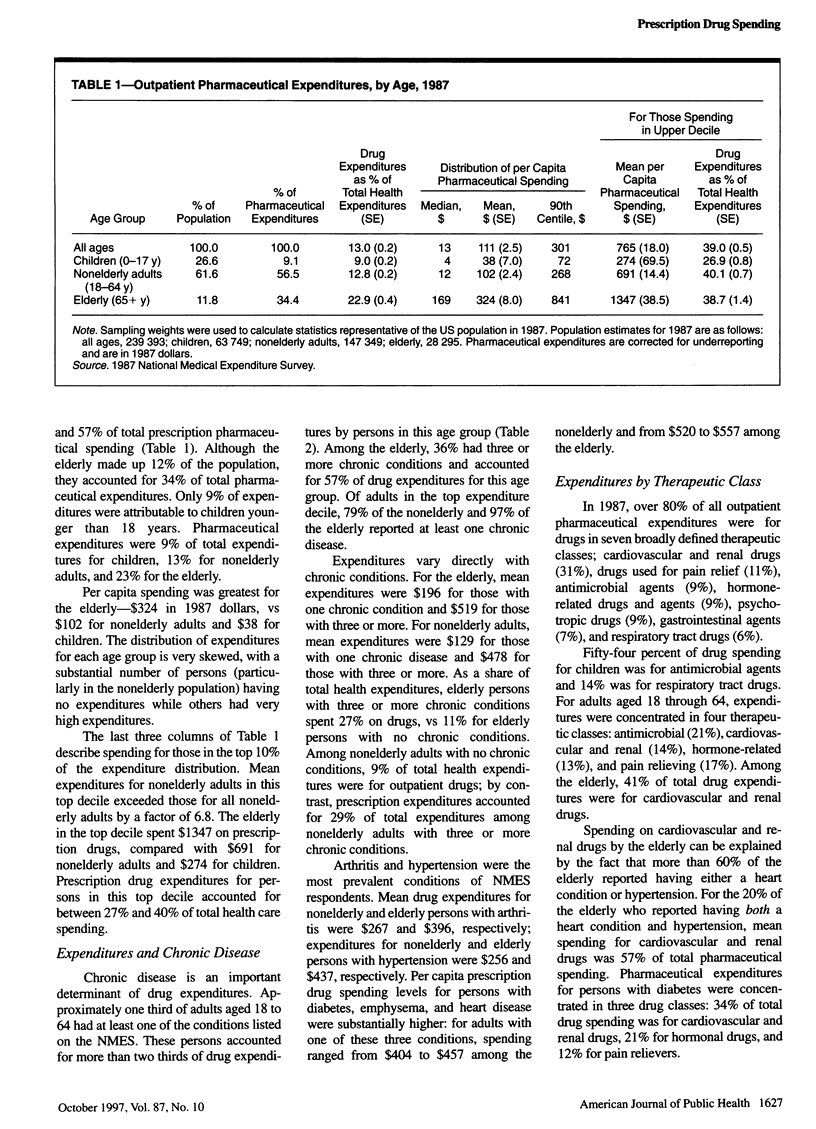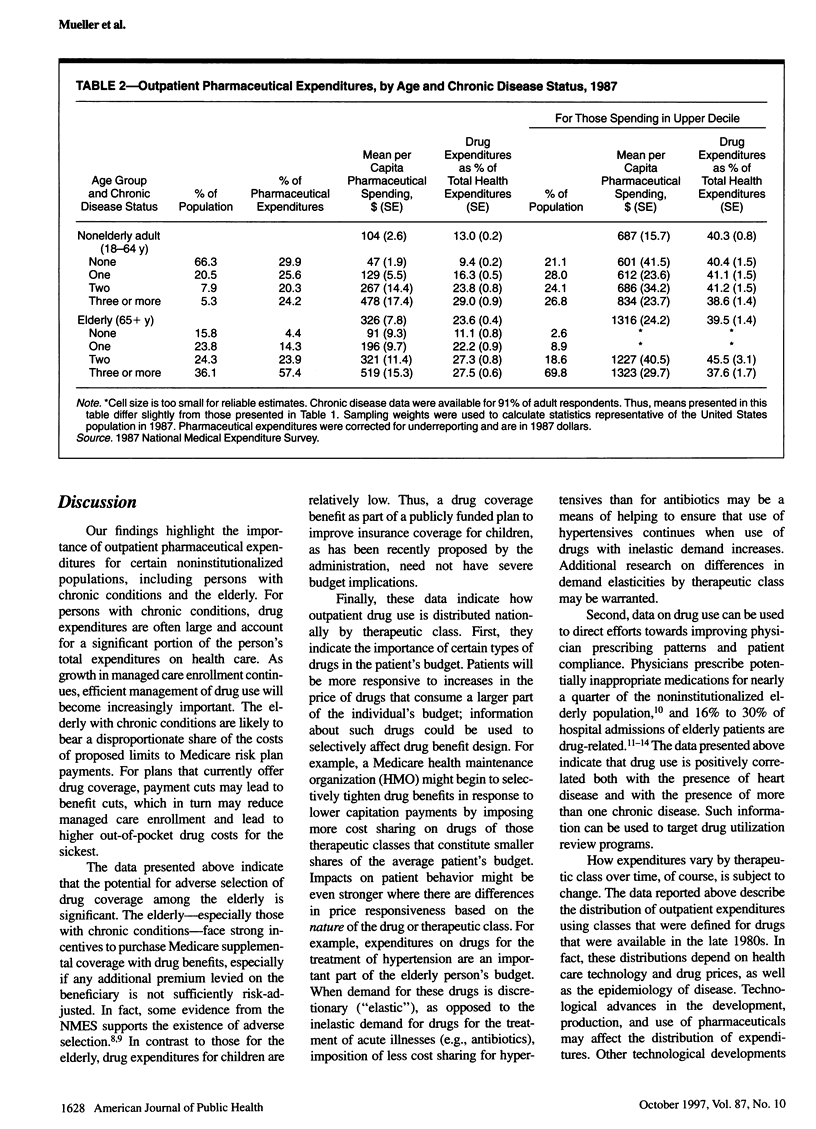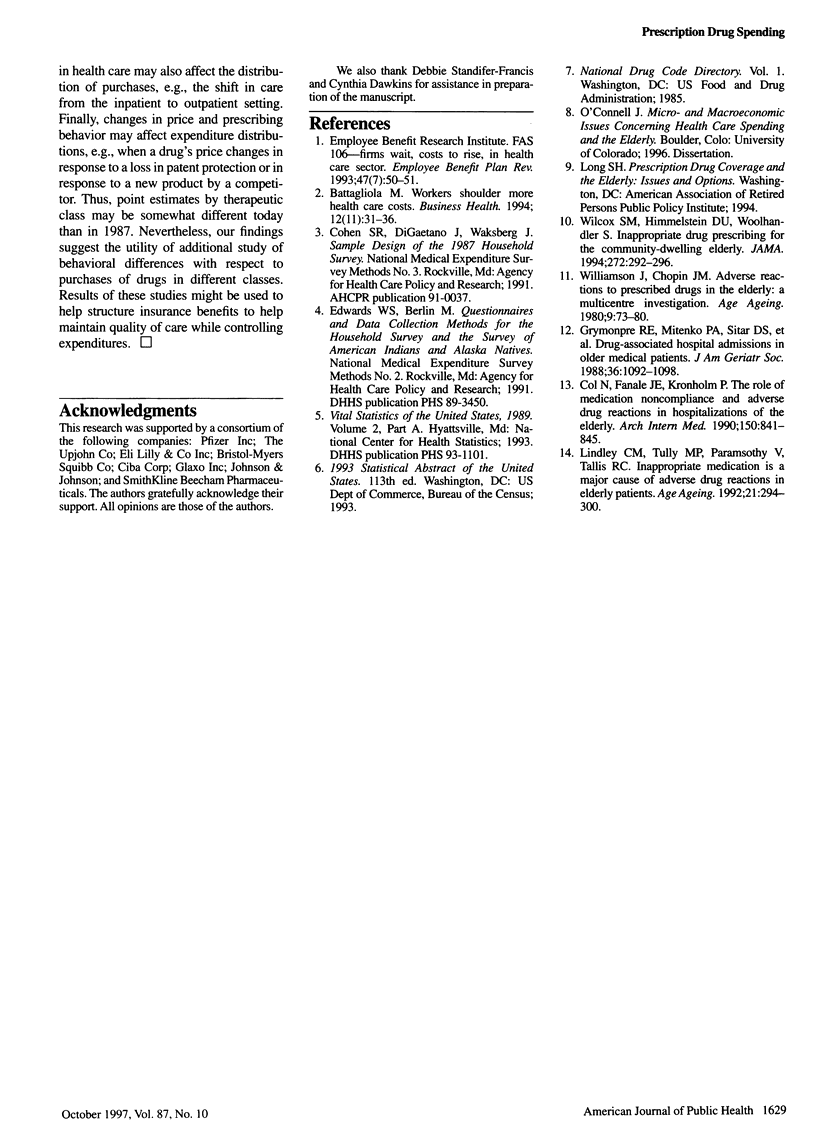Abstract
OBJECTIVES: The purpose of this study was to examine how pharmaceutical expenditures vary by age and the presence of chronic health problems. METHODS: Data from the 1987 National Medical Expenditure Survey were used to obtain nationally representative estimates of outpatient prescription drug expenditures for the noninstitutionalized population and the fraction of total health expenditures used to purchase medications for age-chronic disease population subgroups. RESULTS: Although the elderly make up 12% of the population, they account for 34% of total pharmaceutical expenditures. Pharmaceutical expenditures are 9% of total expenditures for children, 13% for nonelderly adults, and 23% for the elderly. Among nonelderly adults, approximately one third have at least one chronic condition and account for over two thirds of drug expenditures. Among the elderly, 36% have three or more chronic conditions and account for 57% of drug expenditures for this group; 41% of total drug expenditures are for cardiovascular or renal drugs. CONCLUSIONS: Significant pharmaceutical spending is for treatment of chronic conditions, which subjects insurance coverage to adverse selection and could affect the design of prescription drug benefit packages. Current enrollees in Medicare risk management plans who have drug benefits may face significantly higher out-of-pocket expenses for pharmaceuticals if capitation rates are cut as a means of controlling Medicare program expenditures.
Full text
PDF



Selected References
These references are in PubMed. This may not be the complete list of references from this article.
- Battagliola M. Workers shoulder more health care costs. Bus Health. 1994 Nov;12(11):31-2, 34-6. [PubMed] [Google Scholar]
- Col N., Fanale J. E., Kronholm P. The role of medication noncompliance and adverse drug reactions in hospitalizations of the elderly. Arch Intern Med. 1990 Apr;150(4):841–845. [PubMed] [Google Scholar]
- Grymonpre R. E., Mitenko P. A., Sitar D. S., Aoki F. Y., Montgomery P. R. Drug-associated hospital admissions in older medical patients. J Am Geriatr Soc. 1988 Dec;36(12):1092–1098. doi: 10.1111/j.1532-5415.1988.tb04395.x. [DOI] [PubMed] [Google Scholar]
- Lindley C. M., Tully M. P., Paramsothy V., Tallis R. C. Inappropriate medication is a major cause of adverse drug reactions in elderly patients. Age Ageing. 1992 Jul;21(4):294–300. doi: 10.1093/ageing/21.4.294. [DOI] [PubMed] [Google Scholar]
- Willcox S. M., Himmelstein D. U., Woolhandler S. Inappropriate drug prescribing for the community-dwelling elderly. JAMA. 1994 Jul 27;272(4):292–296. [PubMed] [Google Scholar]
- Williamson J., Chopin J. M. Adverse reactions to prescribed drugs in the elderly: a multicentre investigation. Age Ageing. 1980 May;9(2):73–80. doi: 10.1093/ageing/9.2.73. [DOI] [PubMed] [Google Scholar]


